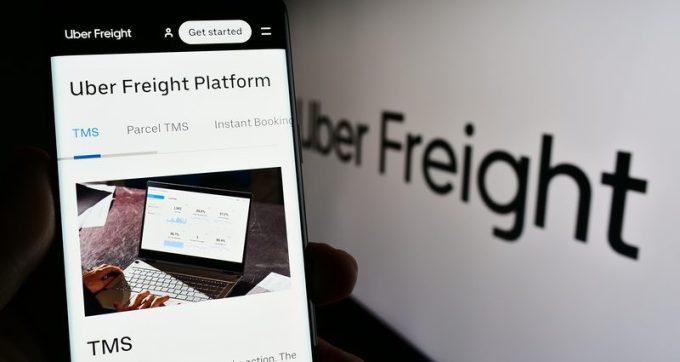FW: Uber Freight – Ebita loss widens but revenue improves
FREIGHTWAVES reports: Uber Freight posted its eighth consecutive quarter of negative earnings before interest, taxes, depreciation ...

Uber Freight has taken another step to expand the functionality of its Exchange procurement platform for shippers and truckers, with a spot market module that combines search, bidding, upfront pricing, automated tendering and booking functions.
Exchange: spot is the latest step in Uber’s effort to establish ...

Comment on this article